Humans have practiced beekeeping since a few thousand years ago. The hives used to house the bees evolve as we learn more about beekeeping. Today, we have a wide range of beehive designs that beekeepers can use. So, which is the best modern beehive you should get?
The best modern beehive for backyard beekeepers is the Langstroth hive. The Langstroth hive can accommodate bigger brood size and more honey. It is also easier to work on. However, it is bulkier and heavier. You can either use wooden or plastic Langstroth hives.
Langstroth Hive
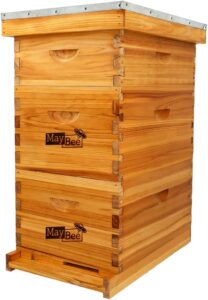
The most popular hive used globally is the modern Langstroth hive. The key feature of the Langstroth hive is its movable frames and implementation of bee space in its design.
The bee space is basically the size of a gap between 0.25 – 0.375” (6 – 9 mm) where the bees will not build a comb nor cement it with propolis. By having precise gaps between frames and from the wall of the hive, Langstroth hive users can easily move and inspect the frame hive, since they are not stuck together by propolis.
Structure of the Langstroth Hive
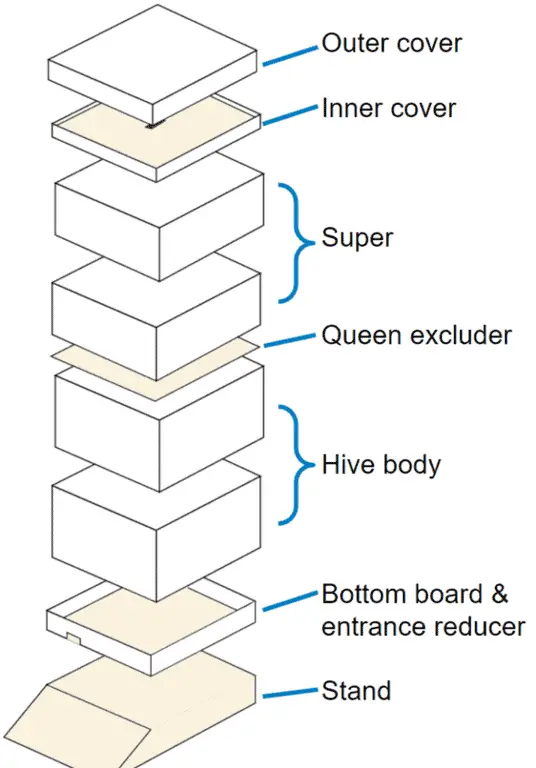
The Langstroth hive is basically a few “boxes” stacked on top of each other. Beekeepers can add or remove the boxes depending on the size of their bee colony. Diagram below shows the layout of a typical Langstroth hive.
Base
From the bottom, you have the base. The purpose of the base is to keep the hive safe from water and pests.
Bottom Board
Directly above the base is the bottom board, which has an opening that serves as the entrance.
You can place an entrance reducer at that opening. The entrance reducer simply limits the entry point into the hive so that your bees can protect their hive better.
Hive Body
Then you have the hive body, which can be separated to lower deep and upper deep. Each hive body holds a few hive frames, which vary depending on the size of your Langstroth hive. A standard Langstroth hive body houses 10 frames.
The lower deep is utilized by the bees as the brood chamber, where they tend the immatures. Meanwhile, the upper is used mainly as a food chamber where they store the honey.
In regions with cold winters, you will need 2 layers of hive body so that the bees have enough space to store sufficient food for overwinter. Otherwise, 1 hive body would be sufficient.
Super
Next would be the super. Super is similar to the hive body. It holds frames for the bees to build combs and deposit the honey. However, it is much shallower compared to the hive body.
Honey in the super is for you to harvest, without affecting the survivability of the bees. You only need to put on the super when your hive body is more than half full.
Queen Excluder
A queen excluder is placed between the super and the hive body. This is used to prevent the queen from moving into the super and lays eggs over there. Otherwise, it will be difficult for you to harvest the honey. Once you have more experience, you can choose not to use it.
Inner Cover and Outer Cover
The top opening of the hive is covered with 2 covers – the outer and the inner covers. The outer cover is usually made of wood wrapped by a metal plate.
Hive Frames
Hive frames are … frames. Each hive frame has 4 bars that hold the beeswax foundation on which the bees will build the combs. There are different sizes of frames, which correspond to the sizes of hive body or super that you are using.
Hive frames can be made of plastic, wood or beeswax. Plastic is more durable but the bees prefer beeswax and wooden frames. They are more reluctant to build the honeycomb on plastic frames.
Hive frames are housed vertically in both hive body and super.
Beeswax Foundation
The beeswax foundation, or honeycomb base, is basically a thin sheet of beeswax imprinted with hexagonal cells. It encourages your bees to build a straight and uniform comb within the hive frames. Without the foundation, your bees may build outside the frame, which makes it more difficult for you to take out the frame for inspection.
Many of the beeswax foundations have a bigger cell size than what the bees would normally build. That encourages the bees to build bigger cells, produce bigger workers and store more honey per cell.
Beeswax foundations need to be strengthened by wires. Make sure you get those that have been embedded with wires, or you will have to do that by yourself.
Try to get the beeswax foundation from reputable suppliers. You will be consuming the honey, so you want to make sure the beeswax foundation is as clean as possible.
Hive Top Feeder
Hive top feeder is an optional part. It is basically a tray that holds syrup. It is useful to provide food to your bees in the autumn and early spring. You can also use it to medicate your bees or even provide water to your bees.
There are other types of feeder available, but the hive top feeder is easiest to maintain due to its capacity and design.
When the hive top feeder is used, the inner cover is kept aside.
Other Modern Hives
Depending on where you stay, you will have better access to certain hives. If you are in the US, getting a Langstroth hive is easy. If you are in the UK, perhaps it is easier and cheaper to get the National Hive. Here are some other common modern hives that you may come across in your local market.
National Hive
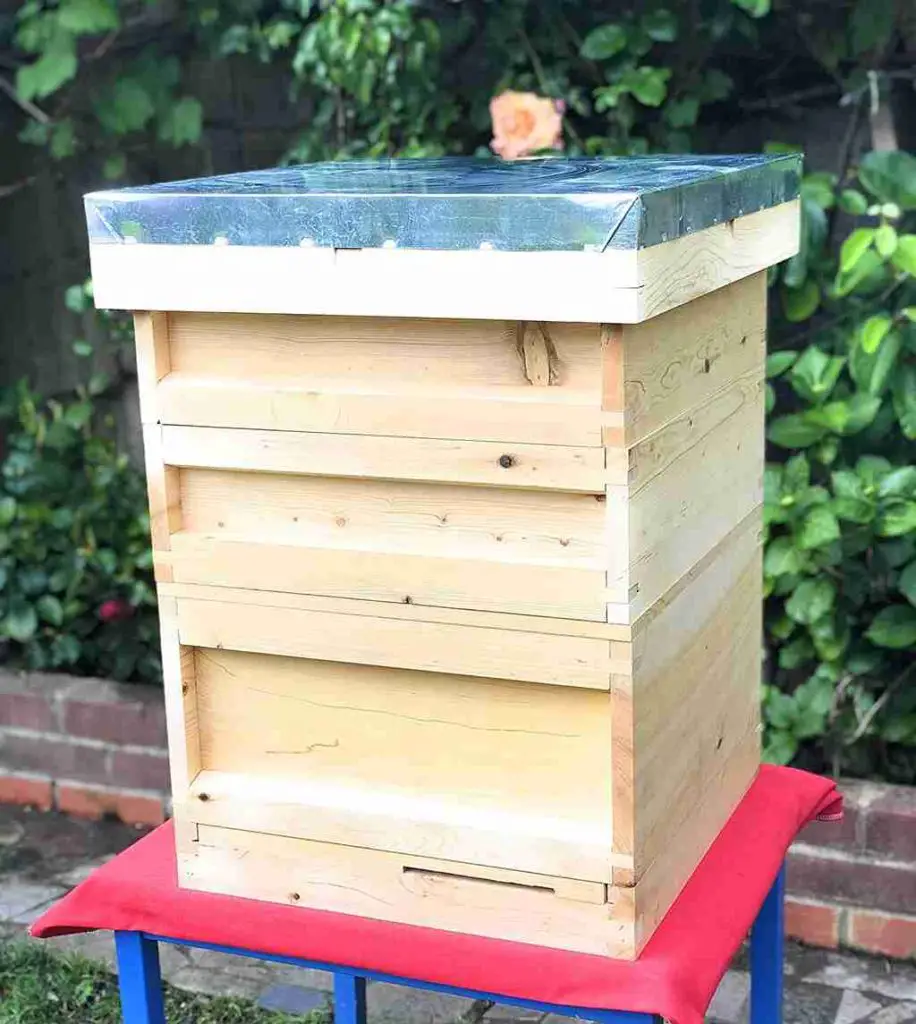
The National hive is a smaller variant of the Langstroth hive. It is suitable for beginners or backyard beekeepers since they tend to have smaller brood size. The National hive is common in the UK.
Overall, the National hive is easier to handle than the Longstroth hive because it is smaller and lighter in weight. Of course, you have to expect a smaller yield in honey.
WBC Hive
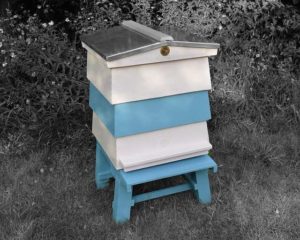
The WBC hive is invented by William Broughton Carr. It was popular back then, and it has a well recognized appearance.
However, WBC hives are complex compared to other hives. They are mostly obsolete in many places nowadays.
Warre Hives
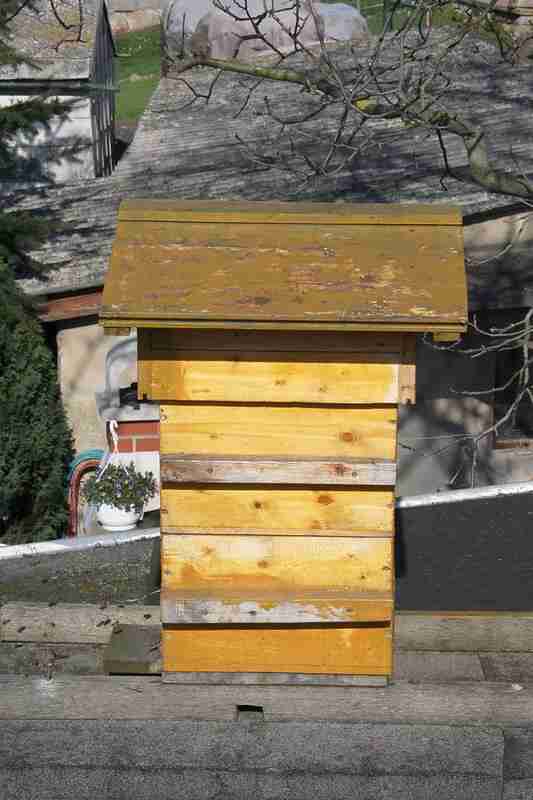
The Warre hive is also known as the People’s hive. It is designed focusing on the wellbeing of the bees. As a result, it’s not the easiest hive to work on.
For instance, instead of stacking new boxes on the top of the hive, new boxes are added from the bottom. This is definitely not user-friendly.
Top Bar Hives
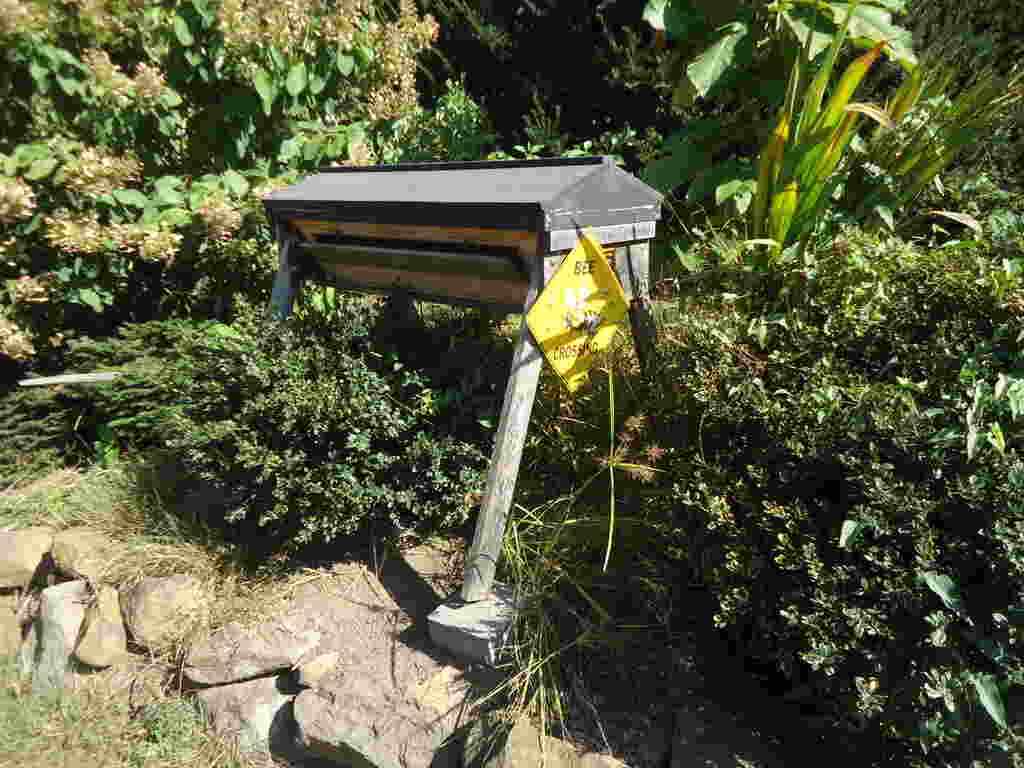
Top bar hives have a simple design. It is cheaper and easier to build due to its simplicity.
Thanks to its design and size, working on a top bar hive is also easier than Langstroth hive.
Unlike other hives where you can harvest a huge amount of honey in one go, top bar hives require beekeepers to harvest small amounts of honey multiple times. This can be inconvenient and time consuming for some people.
Why choose Langstroth Hive over other Modern Hives?
The Langstroth hive is generally larger than other modern beehives. This allows beekeepers to rear more bees and harvest more honey per hive. Due to its modular design, you can work on the bees easily, and adjust the size of the hive accordingly.
Wooden versus Plastic Hive
Modern beehives are usually made of wood or plastic. Each has their pros and cons, as listed in the table below.
| Wooden Hive | Plastic Hive |
|---|---|
| Can be DIY | No DIY element |
| Natural and attractive to bees | Not as attractive to bees |
| Greener materials | Unsustainable materials |
| Sturdy | Flimsy |
| Better moisture control | Potential moisture issue |
| Cheap replacement | Expensive replacement |
| Self assembly is required | Come pre-assembled |
| Heavy | Lightweight |
| Prone to pest damage | Pest resistant |
| Poor insulation | Better insulation |
| Degrade over time | Long lasting |
In general, wooden hives are more natural and greener, but they are heavier and don’t last as long as plastics. Meanwhile, plastic hives are lightweight, durable, pest-resistant and have better insulation. However, they are more expensive to replace. Honey bees tend to prefer wooden over plastic hives.
Bees tend to reject plastic hive frames. To encourage the bees to start building combs in a plastic beehive, beekeepers usually apply beeswax onto the foundation. This extra step is not necessary if you are using a wooden hive.
Another issue with plastic hives is probably the risk of chemical leaching from the plastic that can contaminate the honey. If you are going for a plastic hive, you would want it to be food grade and BPA-free.
Insulation is important for the bees in extreme weather conditions. Plastic hives are more superior in terms of insulation thanks to their double layer insulation walls. A better insulation results in lower energy consumed for thermoregulation, better survivability during the winter, and ultimately more honey yield.
Naturally, though, bees can adapt to extreme weather conditions on their own. Unless you are looking at maximizing the honey yield, or if you stay in places with a long winter or summer, you might not need a plastic hive just because of the insulation property.
There are also polystyrene (styrofoam) hives available in the market. The polystyrene used is usually high density polystyrene that is sturdy, and can last for many years. They are similar to plastic hives, with an even better insulation property.
Wooden hives are the mainstream beehives used by many beekeepers. While there are improvements in plastic hives, making them favorable for some beekeepers, many beekeepers still stick with the wooden ones. If you can’t decide between wooden and plastic hives, go for the wooden one.


